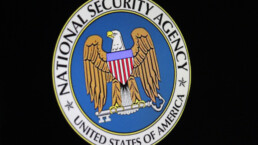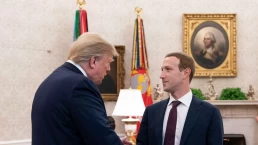The U.S. military economy incorporates hundreds of American communities. Miriam Pemberton’s new book, Six Stops on the National Security Tour, is the first to connect our national security apparatus to the local level via deeply reported portraits of six carefully selected locations, including military Meccas and out-of-the-way places. In this, the second excerpt from her book’s introduction, she discusses the evolution of the national security state.
By Miriam Pemberton
The following is an excerpt from Six Stops on the National Security Tour:
Rethinking Warfare Economies (Routledge, 2022). The full text is available from Routledge’s site. Please also read Part 1 of this series on Progressive Hub.
“National Security”
The term “national security” had no real currency until the Cold War replaced preparation for a specific war with a military establishment permanently on call to pursue U.S. interests by force anywhere in the world. Congress codified this new mission in 1947 in the National Security Act, with amendments passed in 1949 reorganizing the War Department into the Department of Defense. The main centralizing features of the Act were: creating a new Air Force branch; creating a civilian Secretary of Defense invested with authority over all the military branches; establishing a National Security Council and a National Security Advisor to coordinate national security policy in the executive branch; creating the CIA; and, in 1952, before handing his job over to Eisenhower, Truman created the NSA. Analysts began referring to the result as the infrastructure of the National Security State.

But what the Act didn’t do was define National Security. And what we mean by the term remains amorphous nearly 75 years later, while carrying almost talismanic power. These may be the two most powerful words in the language of U.S. policy.
Building the apparatus of this National Security State coincided with the debut of The Nuclear Age. In the 1950s, the threat to America became the threat of wholesale extinction, and it turned global. An internal poster at the NSA read “Plant security consciousness in your own mind,” and “Cultivate security consciousness in the minds of others.” Such admonitions had plenty of success, as many Americans came to believe that protecting your family entailed stockpiling food in the basement and building a bomb shelter in the backyard.
Almost nobody does that anymore. But almost everybody is tempted to define the cause they care about as a national security threat. President Eisenhower got traction, which turned into money, for his interstate highway system by branding it the National Security Highway System. And science education in America got a huge funding boost after Americans started watching Sputnik make its way across the night sky. These days international competition over trade is frequently draped in “national security” clothing. The Trump Administration even tried to label imported steel from Canada as a national security threat.
In the name of National Security, the reach of the NSA and other intelligence agencies has come to include the clandestine surveillance of millions, including U.S. citizens. The 9/11 attacks became a pretext for the Bush Administration to override, secretly, the legal constraints on such domestic surveillance. Reestablishing these constraints is still contested territory. And massive amounts of information are whisked away from public view, justifiably and otherwise, when marked “Classified.”
Another consequence of living in a National Security State is this: If what constitutes national security has never been defined, and how to achieve it remains contested, how can we know how much money is enough to devote to it? When “security” is at stake, the case for erring on the side of more always starts out ahead. The Department of Defense’s official National Security Strategy (NSS) perennially cites a set of national security needs that can’t be paid for with the current budget, and then uses this disconnect to argue for more money. The alternative, of course, is to prioritize the missions and pare the budget to fit them.
What has been uncontested from the beginning is that providing the tools of military force involves the cooperation—the entanglement—of the public and the private sectors. While the government does some military production—in so-called Government-Owned Government Operated facilities (GOGOs)—since General Motors was enlisted to build tanks in World War II, most production has been outsourced to private contractors.
Yet the main architects of the National Security State—President Truman followed by President Eisenhower—definitely had their moments of skepticism about this permanent marriage of public and private sector military interests. Truman’s came before his presidency began. As a congressman he made a national name for himself by convening the Commission on Wartime Contracting to uncover waste and fraud in the system.
Eisenhower’s doubts came, or were most forcefully expressed, at the end of his presidency. In his famous Farewell Address he raised the alarm about this conjunction of an immense military establishment and a large arms industry [which] is new in the American experience. The total influence— economic, political, even spiritual—is felt in every city, every Statehouse, every office of the Federal government. We recognize the imperative need for this development. Yet, we must not fail to comprehend its grave implications. Our toil, resources, and livelihood are all involved. So is the very structure of our society. In the councils of government, we must guard against the acquisition of unwarranted influence, whether sought or unsought, by the military-industrial complex.
Early drafts of the speech called it the “military industrial congressional complex,” a more complete descriptor. Eisenhower raised this alarm and was largely ignored. The “imperative need for this development” came under radical questioning three decades later, when its rationale—the Cold War against the Soviet Union—fell apart. But the “need” revamped and reasserted itself, and the complex came back as strong as ever. It is now poised to command more money, adjusted for inflation, than it had at any time during the Cold War. The term has acquired such potency that it has been applied over the years to all manner of imputed institutional power conspiracies, from the “prison industrial complex” to the “medical industrial complex” to even Minority Leader Mitch McConnell’s 2021 descriptor for resistance to voter- suppression laws as the “outrage industrial complex.”
This book will explore this military-industrial, public-private complex, and how it plays out beyond the Beltway. The economy created by military spending is deeply embedded in communities across America. We will visit a few of them to see how they came to be that way. In trips to six locations around the country, plus our militarized border and the apparatus of the hyper-weapons of the future, the book will connect this complex’s big picture to its ground level. It will tell the story of how and why these pieces of it came to be where they are, who works in them, and how these pieces fit into the whole.
What are the prospects that, all these years later, the “undue influence” of military industrial arrangements can be dislodged? In his first budget, President Biden could have begun the process by cutting the near-historically large military budget inherited from his predecessor. He didn’t. And Russia’s invasion of Ukraine sent United States military spending even higher.
But the Biden administration has taken a few steps in the direction of redefining national security and the means to achieve it. It declared up front that diplomats, not the military, would take the lead on shaping U.S. foreign policy. And in one of its most important steps toward redefinition, it committed to “Put the Climate Crisis at the Center of United States Foreign Policy and National Security.”
During his presidential campaign Joe Biden told the story of an early visit to the Pentagon as vice president for a briefing on the greatest danger facing our security: “Know what they told us it was?… Climate change. Climate change is the single greatest concern for war and disruption in the world, short of a nuclear exchange.”
In this new decade two unprecedented national security challenges have converged on us: a global pandemic, perhaps the first of many, and climate changes threatening to become irreversible, leaving us without a habitable planet. No military forces on Earth can stop them. But the country’s resources, too many of them currently commandeered by its military forces, have to be mobilized against them. And to prevent catastrophic climate change, the country’s manufacturing capacity, too much of it devoted to supplying those military forces, must be redeployed toward creating a zero-emission economy.
Some parts of the new administration’s early budgets, legislative proposals and administrative actions are trying to make that commitment real. Also real, though, are the powerful interests massed to prevent this: those who profit from a rising tide of federal money parked in the Pentagon budget, as well as the many profiting from climate denial. It will be the fight of our lives.
Miriam Pemberton has studied the U.S. military economy and the means of shrinking it down to size for decades, first as Director of the National Commission for Economic Conversion and Disarmament and then as a Research Fellow at the Institute for Policy Studies. With Lawrence Korb, she headed the task force that for a decade produced the annual “Unified Security Budget of the United States.” With William Hartung she edited Lessons from Iraq: Avoiding the Next War (Paradigm, 2008). She headed up the team that produced three successive versions of “Military vs. Climate Security: The Budgets Compared.” Pemberton holds a PhD from the University of Michigan.
Recent Posts
“Arrest Now, Ask Questions Later”: Why Did L.A. ICE Agents Arrest and Jail U.S. Citizen Andrea Velez?
July 3, 2025
Take Action Now “They didn’t have vests that said ICE or anything. Their cars didn’t have license plates. … Just because of the color of our…
Trump’s Big, Beautiful Bill Is Naked Class War
July 3, 2025
Take Action Now Trump’s “Big, Beautiful Bill” trades tax cuts on millionaires for the dissolution of society.By Hamilton Nolan, In These Times…
Mayor Mamdani’s First Day, A Zero Hour Conversation With Richard Wolff
July 2, 2025
Take Action Now If elected, what would Mayor Mamdani do on his first day in City Hall? How would a democratic socialist govern as a big-city mayor?……
The U.S. Is Funding A Bloodbath At Gaza Aid Centers
July 2, 2025
Take Action Now The admin just gave $30M to GHF, the organization at the center of charges that Israel is weaponizing assistance and shooting at…




